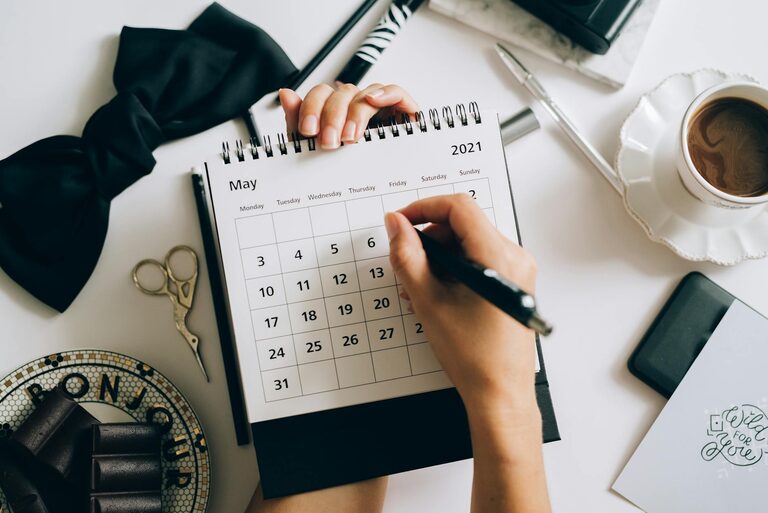Creating a weekly reset routine is like giving yourself a fresh start every seven days. It’s a dedicated time to reflect, refresh, and organize your life so you can tackle the upcoming week with clarity and energy. Whether your week feels overwhelming or you simply want to build better habits, designing a reset routine can help you maintain balance and improve your well-being.
In this post, we’ll explore why a weekly reset matters and guide you through creating a personalized routine that fits your needs.
Why Have a Weekly Reset Routine?
Life can be hectic. When busy days blur into one another, it’s easy to lose track of your goals, let stress build up, and feel out of sync. A weekly reset routine helps you:
– Recharge your energy: Rest your mind and body after a busy week.
– Reflect on progress: Review achievements and identify areas for improvement.
– Organize tasks: Plan and prioritize your upcoming week.
– Improve habits: Reinforce positive behaviors and let go of distractions.
– Create intentional downtime: Dedicate time to self-care and relaxation.
By setting aside regular time to reset, you build consistency and gain control over your time and mood.
Step 1: Choose the Best Day and Time
The first step is selecting a day and time that suits your schedule. Many people opt for Sundays or Monday mornings, but the best choice is whenever you can consistently dedicate at least 30 to 60 minutes without interruptions.
Tips for choosing the right moment:
– Consider your energy levels (e.g., morning or evening).
– Avoid busy or stressful periods.
– Communicate your chosen time to family or housemates to minimize distractions.
Step 2: Decide What Areas to Reset
Your weekly reset routine can cover different aspects of life depending on your priorities. Common areas include:
– Physical health: meal prep, exercise plan, sleep schedule
– Mental wellbeing: meditation, journaling, goal review
– Home environment: cleaning, tidying, organizing
– Work and productivity: task review, calendar planning, inbox zero
– Social connections: reaching out to friends or family
Choose 3-5 areas that feel important and manageable to work on regularly.
Step 3: Create a Simple, Flexible Checklist
Having a clear checklist makes your routine easier to follow and reduces decision fatigue. Here’s an example of a weekly reset checklist:
- **Reflect and Journal**
Write down highlights, challenges, and lessons from the past week.
- **Plan Your Week**
Review appointments, deadlines, and goals for the coming days.
- **Organize Your Space**
Tidy your workspace or living area to create a fresh environment.
- **Meal Prep or Plan**
Choose meals and prep ingredients to save time during busy days.
- **Set Self-Care Goals**
Schedule moments for exercise, relaxation, or hobbies.
Adjust the checklist over time based on what works best.
Step 4: Gather Tools and Resources
Make your reset routine enjoyable and effective by preparing supportive tools such as:
– A journal or notebook for reflections
– Planner or digital calendar
– To-do list app or sticky notes
– Cleaning supplies or organizers
– Healthy meal recipes or grocery list templates
Having these ready will make the process smoother and more motivating.
Step 5: Make It Enjoyable
Routines stick when they feel pleasant, not like chores. Consider:
– Playing your favorite music or podcast during your reset time.
– Lighting a candle or making a cup of tea.
– Rewarding yourself after completing tasks with a small treat or break.
Creating a positive association will help you maintain the habit long-term.
Sample Weekly Reset Routine Timeline
– Sunday Evening (30-60 minutes):
Reflect on your week with journaling, review your calendar, tidy your main living area, and plan meals.
– Monday Morning (10-15 minutes):
Review priorities for the day and set intentions.
– Midweek Mini-Reset (Optional, 10 minutes):
Quick check-in and tidy-up to stay on track.
Customize this timeline to fit your lifestyle.
Tips for Success and Staying Consistent
– Start small: Focus on just a few tasks at first.
– Set reminders: Use phone alerts or calendar events.
– Be flexible: Life happens; it’s okay to adjust or skip sometimes.
– Track progress: Celebrate small wins to stay motivated.
– Involve others: Share the routine with a friend or family member for mutual support.
Conclusion
Designing a weekly reset routine is a powerful way to bring calm, clarity, and purpose to your life. By setting aside intentional time each week to reflect, organize, and care for yourself, you prepare your mind and environment for success. Remember, the best routine is one that feels doable and enjoyable, so experiment with your routine and make it your own.
Start small, stay consistent, and enjoy the benefits of a weekly reset. Your future self will thank you!



